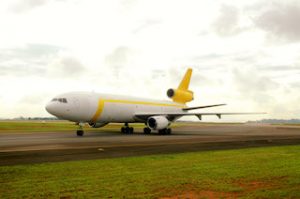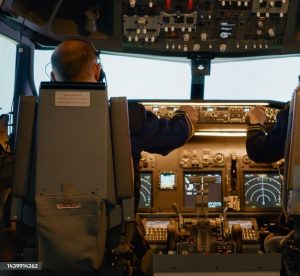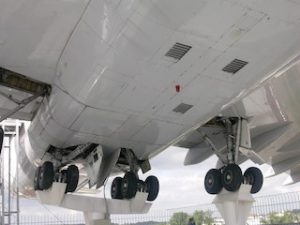Requirements For Attending A Jet Orientation Course
 The Jet Orientation Course (JOC) is a crucial step for aspiring commercial pilots transitioning from propeller-driven aircraft to jet-powered planes. This course equips pilots with the necessary skills and knowledge to handle the complexities of jet aircraft and prepares them for further advanced training, such as the Multi-Crew Cooperation (MCC) course. To enroll in a JOC, pilots must meet specific prerequisites that ensure they possess the foundational skills and qualifications needed for successful training. This article explores in detail the requirements for attending a Jet Orientation Course.
The Jet Orientation Course (JOC) is a crucial step for aspiring commercial pilots transitioning from propeller-driven aircraft to jet-powered planes. This course equips pilots with the necessary skills and knowledge to handle the complexities of jet aircraft and prepares them for further advanced training, such as the Multi-Crew Cooperation (MCC) course. To enroll in a JOC, pilots must meet specific prerequisites that ensure they possess the foundational skills and qualifications needed for successful training. This article explores in detail the requirements for attending a Jet Orientation Course.
Importance of a Jet Orientation course
The transition from flying propeller-driven aircraft to operating jet engines involves a significant change in flight dynamics, aircraft systems, and operational procedures. The JOC is designed to bridge this gap, providing pilots with the skills to manage jet aircraft’s higher speeds, advanced avionics, and different handling characteristics. Completing a JOC is essential for pilots who aim to pursue careers with commercial airlines, as it lays the groundwork for effective jet operations and multi-crew environments.
Prerequisite 1: Commercial Pilot Licence (CPL)
1) What is a CPL?
A Commercial Pilot Licence (CPL) allows a pilot to be compensated for their flying services. This licence is a significant step up from a Private Pilot Licence (PPL), requiring more extensive training and demonstrating a higher level of proficiency. The CPL training encompasses advanced flying skills, complex aircraft systems, and a deeper understanding of aviation regulations and safety procedures.
2) Obtaining a CPL
To obtain a CPL, a pilot must complete a series of steps, including:
-
- Eligibility requirements: Candidates must typically be at least 18 years old and hold a valid PPL. They should also have a good command of the English language.
- Flight hours: A minimum number of flight hours is required, often around 200 total flight hours, including a specified number of hours as pilot-in-command (PIC) and cross-country flying.
- Ground school: Extensive theoretical knowledge is crucial, covering subjects such as air law, aircraft general knowledge, flight performance and planning, human performance and limitations, meteorology, navigation, operational procedures, and principles of flight.
- Flight training: Practical flight training is essential, focusing on advanced maneuvers, navigation, and emergency procedures. This training includes flying both single-engine and multi-engine aircraft.
- Examinations: Candidates must pass written exams covering theoretical knowledge and a practical flight test to demonstrate their flying skills and decision-making capabilities.
Prerequisite 2: Instrument Rating (IR)
1) What is an IR?
An Instrument Rating (IR) allows a pilot to fly aircraft in various weather conditions, including those where visual flight rules (VFR) are not possible. The IR is essential for pilots who aim to operate in commercial aviation, as it enables them to navigate and control the aircraft solely by reference to instruments.
2) Obtaining an IR
To obtain an IR, pilots must complete the following:
-
- Eligibility requirements: Candidates must hold at least a PPL and meet specific medical fitness standards.
- Flight hours: A minimum number of flight hours under instrument flight rules (IFR) is required, often around 50 hours of cross-country flight as PIC and 40 hours of actual or simulated instrument time.
- Ground school: Theoretical knowledge training is necessary, covering topics such as IFR procedures, navigation aids, meteorology, and instrument flight rules and regulations.
- Flight training: Practical training includes flying with sole reference to instruments, practicing approaches, holds, and navigation procedures.
- Examinations: Candidates must pass written exams on theoretical knowledge and a practical flight test, demonstrating their ability to fly accurately and safely using instruments alone.
Prerequisite 3: Multi-Engine (ME) Rating
1) What is an ME Rating?
A Multi-Engine (ME) Rating allows a pilot to operate aircraft with more than one engine. This rating is crucial for pilots intending to fly commercial aircraft, as most commercial planes are multi-engine.
2) Obtaining an ME Rating
To obtain an ME Rating, pilots must complete:
-
- Eligibility requirements: Candidates must hold at least a PPL, and often an IR is recommended or required.
- Flight hours: While specific hour requirements vary, the focus is on mastering the handling of multi-engine aircraft, including engine-out procedures and asymmetric flight.
- Ground school: Theoretical knowledge covers the principles of multi-engine aerodynamics, aircraft systems, and performance characteristics.
- Flight training: Practical training focuses on the unique aspects of multi-engine flying, such as managing engine failures, operating under different power settings, and understanding the aerodynamic effects of multi-engine configurations.
- Examinations: Candidates must pass a practical flight test, demonstrating their ability to handle multi-engine aircraft proficiently.
Path to a Jet Orientation course
1) Choosing a training provider
Selecting a reputable training provider for the JOC is essential. Pilots should consider factors such as the quality of training, the experience of instructors, the availability of advanced simulators and aircraft, and the institution’s accreditation.
2) Structured training programs
Many flight schools offer structured training programs that integrate CPL, IR, and ME training. These programs provide a seamless pathway for pilots to acquire the necessary qualifications efficiently, often culminating in eligibility for the JOC.
3) Financial planning
Obtaining a CPL with IR on ME aircraft and enrolling in a JOC can be costly. Pilots should plan their finances carefully, considering tuition fees, flight hours, examination fees, and living expenses. Scholarships, grants, and financing options may be available to help manage these costs.
JOC course content
1) Theoretical training
JOC includes extensive theoretical training, which covers:
-
- Jet aircraft systems: Detailed study of jet engines, electrical systems, hydraulic systems, environmental control systems, and other essential aircraft systems.
- Aerodynamics and performance: Principles of high-speed flight, jet engine performance, and performance calculations such as takeoff and landing distances, climb performance, and fuel planning.
- Flight planning and management: Techniques for planning efficient and safe flight routes, managing fuel consumption, and calculating aircraft weight and balance.
- Jet handling techniques: Techniques for controlling the aircraft during high-speed phases of flight, performing jet-specific manoeuvres, and effectively using flight management systems (FMS), autopilot, and other automated systems.
2) Simulator training
Simulator training is a significant component of the JOC, allowing pilots to practice and refine their skills in a controlled environment. Simulator sessions typically include:
-
- Normal operations: Practice of standard procedures, including takeoff, climb, cruise, descent, and landing.
- Abnormal and emergency procedures: Training on handling various abnormal and emergency situations, such as engine failures, system malfunctions, and adverse weather conditions.
- Crew Resource Management (CRM): Emphasis on effective communication, decision-making, and teamwork in a multi-crew environment.
Additional considerations
1) Human factors and safety management
Understanding human factors and their impact on aviation safety is a critical aspect of the JOC syllabus. This module covers:
-
- Human performance and limitations: Factors affecting pilot performance, such as fatigue, stress, and workload management.
- Safety culture: Promoting a safety-first mindset and adherence to best practices in aviation safety.
- Risk management: Identifying, assessing, and mitigating risks in flight operations.
2) Regulatory knowledge
Compliance with aviation regulations is mandatory for all pilots. The JOC syllabus includes training on relevant regulations and standards, such as:
-
- International Civil Aviation Organization (ICAO) standards: Understanding the global regulatory framework governing aviation operations.
- Local aviation authority regulations: Familiarity with national regulations and requirements specific to the region of operation.
- Operational procedures: Adherence to airline-specific SOPs and company policies.
Importance of meeting JOC prerequisites
1) Advanced flying skills
The combination of a CPL, IR, and ME rating ensures that pilots possess the advanced flying skills necessary for jet operations. The CPL training ensures proficiency in complex maneuvers and advanced navigation, the IR allows for safe operation in diverse weather conditions, and the ME rating prepares pilots for the unique challenges of multi-engine aircraft.
2) Operational competence
Holding these qualifications demonstrates a pilot’s competence in operating under different conditions and handling various aircraft systems. This competence is crucial for jet operations, where pilots must work seamlessly as a team, managing the aircraft’s systems and responding to any emergencies.
3) Safety and compliance
The rigorous training and examinations required for obtaining a CPL with IR on ME aircraft ensure that pilots adhere to high safety standards and regulatory compliance. These standards are critical for jet operations, where passenger safety and regulatory adherence are paramount.
Path to advanced training
Successfully completing a JOC opens the door to further advanced training, such as the MCC course and type rating courses for specific jet aircraft. These courses are essential for pilots who aim to work with commercial airlines, as they ensure the ability to work effectively as part of a cockpit team and operate specific aircraft types proficiently.
Meet the requirements for JOC
The Jet Orientation Course (JOC) is a critical step for pilots transitioning from propeller-driven aircraft to jet engines. The prerequisites of holding a Commercial Pilot Licence (CPL) with an Instrument Rating (IR) on Multi-Engine (ME) aircraft ensure that pilots possess the necessary advanced flying skills, operational competence, and adherence to safety standards required for jet operations. By understanding and fulfilling these requirements, aspiring pilots can embark on their journey towards a successful and rewarding career in commercial aviation. The JOC not only provides the essential skills for jet operations but also lays the foundation for further advanced training, ultimately enabling pilots to achieve their professional goals and excel in the dynamic and challenging field of aviation.










